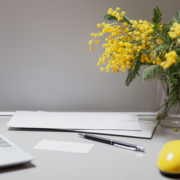How a Standing Desk can Improve your Work Day
Creative slumps and creatives slump. It’s hard to conjure up the next big idea with a bad back. Hunching over a desk all day is physically straining and professionally draining. As deadlines pile up and your shoulders tighten day by day, creative problems call for creative solutions. To prevent pain and injuries, consider using a standing desk or a sit-and-stand desk. Don’t let the words “standing”’ or “stand” faze you! Instead of fidgeting on your feet for hours until they ache like your back, these desks allow you to change positions to ward off the consequences of standing or sitting in one position for too long. Users have the option to alternate between standing and sitting on a high chair at a standing desk or sitting and standing in intervals at a sit-and-stand desk. These modern desks, with their many features, may help you relieve your body pain and consequently, your concentration.
You can choose from different standing desks with fixed or adjustable heights, manual or automatic cranks, and more. Each type has its pros and cons, from price to assembly to ergonomics. It’s easy to choose one that’s comfortable for you. And when you’re comfortable, your productivity and engagement may skyrocket as a result. It’s not a surprise that companies are turning toward these desks with such benefits in mind. The transition from a traditional desk to a standing desk may be awkward at first, but with proper research and preparation, your body and mind may thank you (plus, your boss and client may thank you too). Along with a desk, you may also want to consider accessories that can help ease the transition, such as supportive shoes and a floor mat. Learn more about standing desks, sit-and-stand desks, and how they can improve your long workdays with this graphic. Your next big idea may not be that out of reach — especially once you have better posture!



